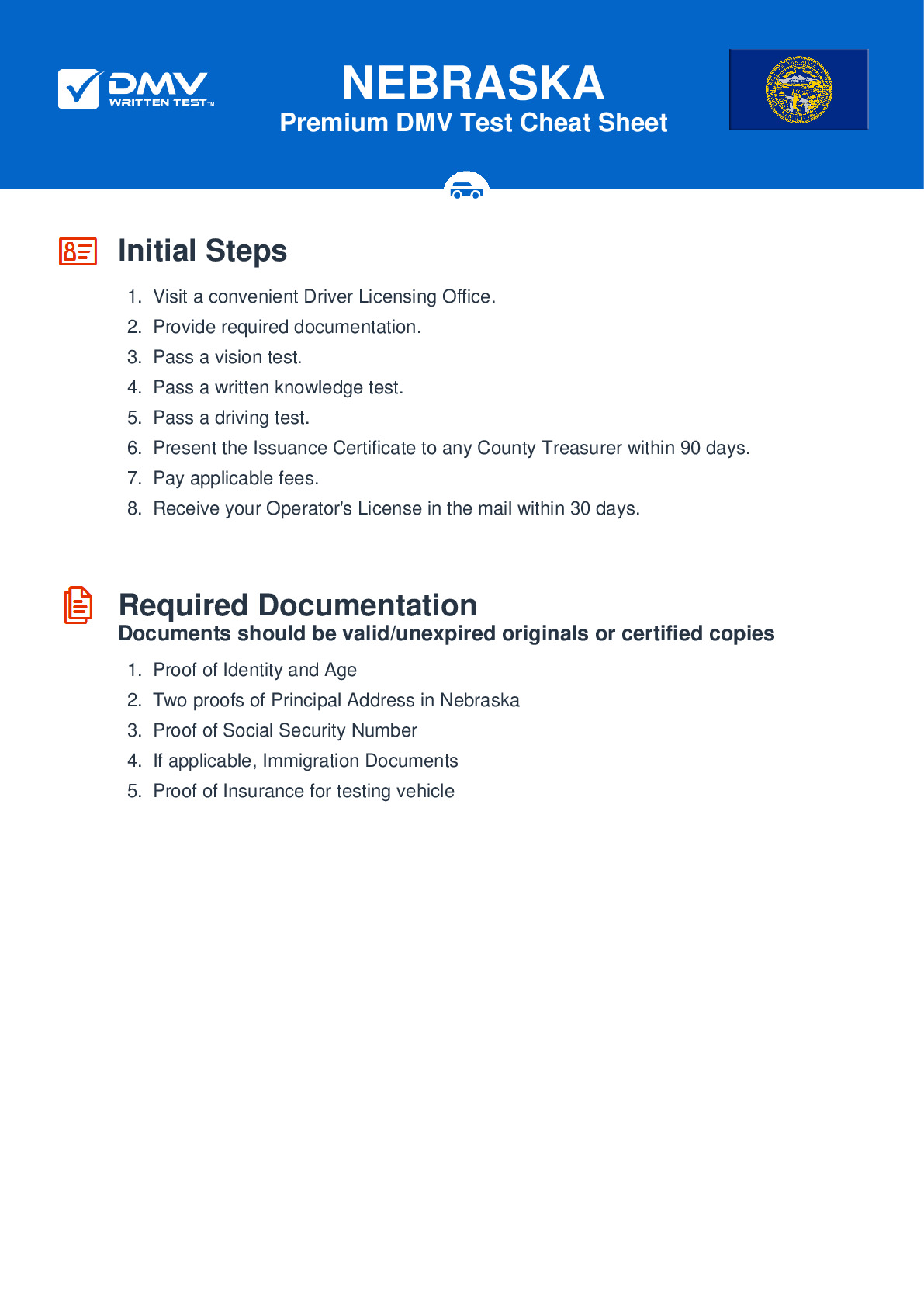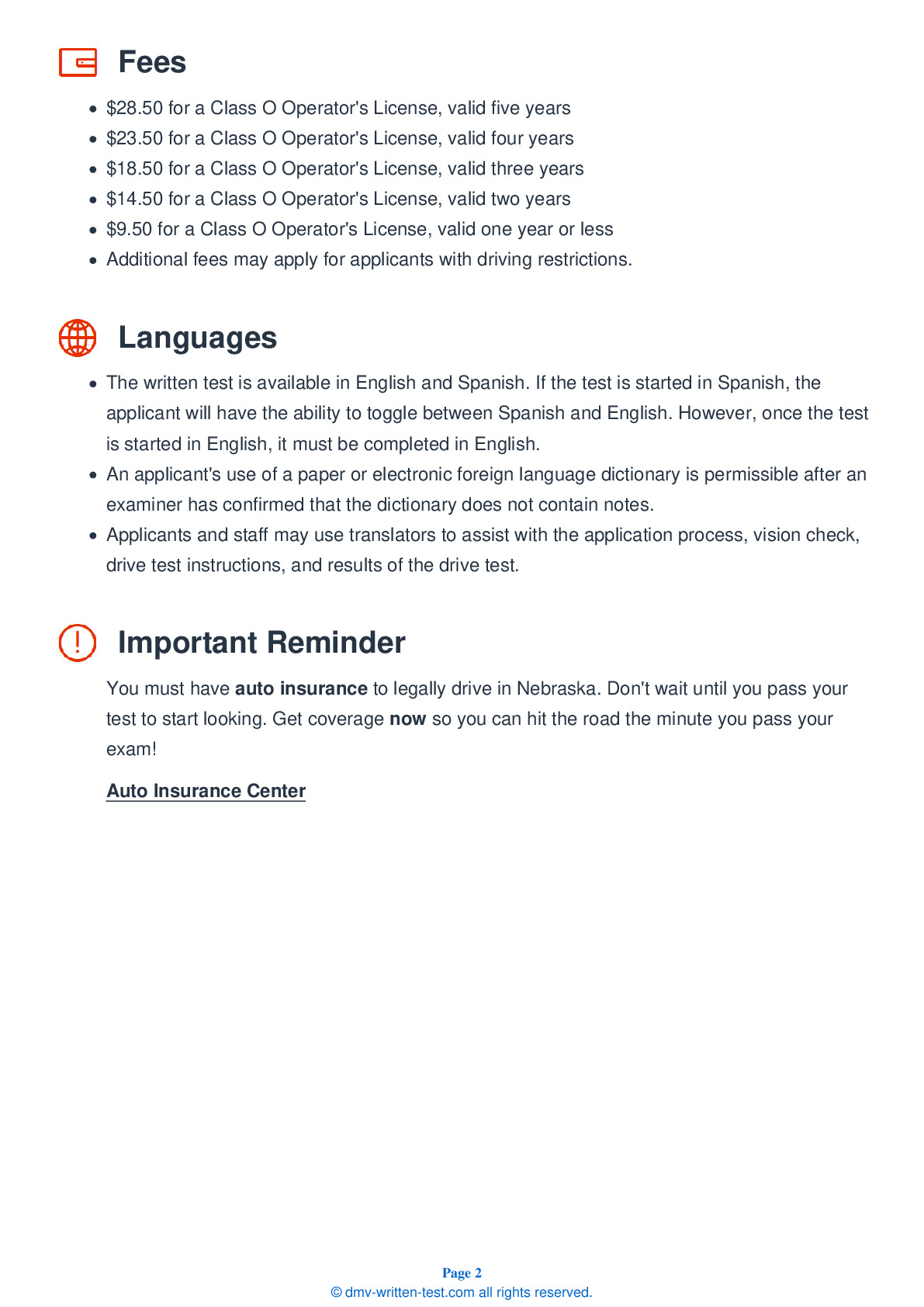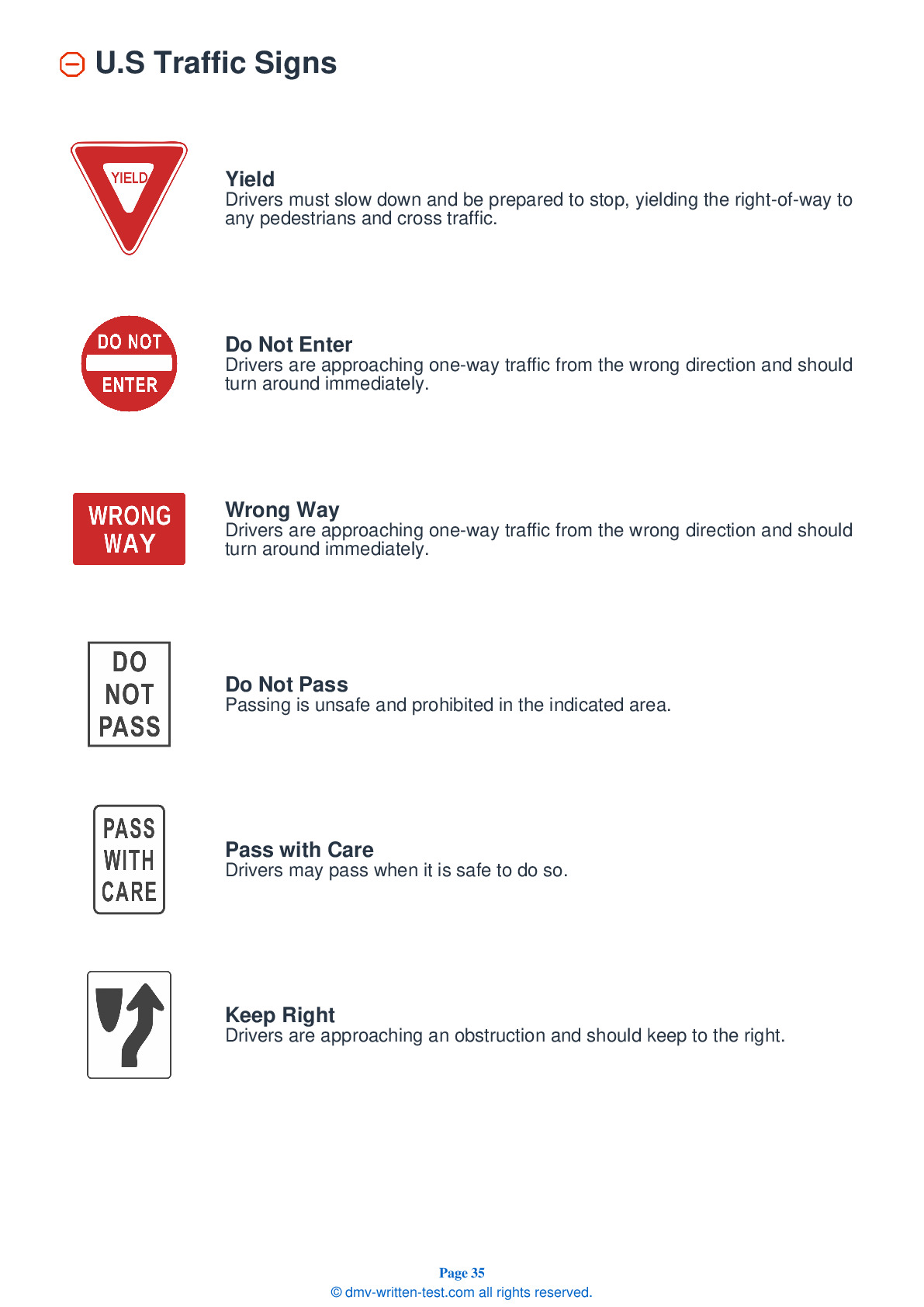2025 Nebraska Permit Test 11
The following questions are from real DMV written tests. These are some of the actual permit questions you will face in Nebraska. Each permit practice test question has three answer choices. Select one answer for each question and select "grade this section." You can find this button at the bottom of the drivers license quiz. For a complete list of questions and answers for Nebraska please visit https://cheat-sheets.dmv-written-test.com/en/nebraska/car.
Number of Tests
Number of Question
Passing Score
9. Excessive speed:
Explanation
Excessive speed is one of the most common contributing factors to vehicle crashes. Excessive speed does not save time and often leads to high-risk decision-making.
10. At dusk or on overcast days, you should:
Explanation
At dusk or on overcast days, you must turn on your headlights. Dim your lights to their low beam setting when within 1,000 feet of an approaching vehicle and when within 500 feet of a vehicle that you are following. When driving in poor weather, always use your low beams.
11. It is illegal for a person 21 years of age or older to drive with a minimum blood alcohol concentration (BAC) of:
Explanation
For drivers age 21 or older, it is illegal to operate a motor vehicle with a blood alcohol concentration (BAC) of 0.08 percent or higher. Driving while under the influence of alcohol is not only illegal, but dangerous.
12. Worn or bald tires:
Explanation
Worn or bald tires can increase your stopping distance and make turning more difficult. Tires without adequate tread also increase the risk of hydroplaning.
13. You are driving on the freeway. The vehicle in front of you is a large truck. You should drive:
Explanation
When you follow so closely behind a truck that you cannot see the truck driver’s side view mirrors, the trucker cannot see you and has no way of knowing you are there. Tailgating a truck, or any vehicle, is dangerous because you take away your own cushion of safety if the vehicle in front of you stops quickly.
14. You may drive around the gates at a railroad crossing:
Explanation
You are required to stop at all railroad crossings when signals warn of an approaching train. These signals may include flashing red lights, a lowered crossing gate, a flagger signaling, or a train’s audible signal of warning. Do not attempt to go around a lowered gate.
15. When driving under snowy or icy conditions:
Explanation
When driving under snowy or icy conditions, you should make speed and directional changes gradually. Never use cruise control when driving on snow or ice because your tires may lose contact with the road and you will lose control of your vehicle.
16. To improve visibility lowered by rain or fog, drivers should use their:
Explanation




